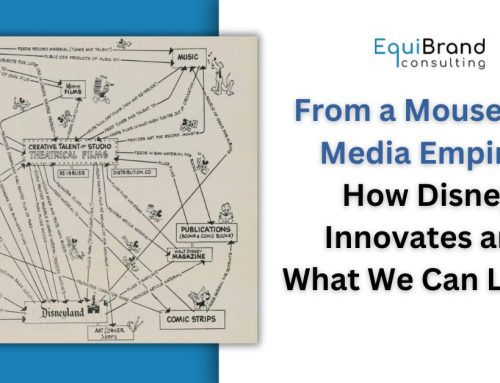“Everybody believes in innovation until they see it. Then they think, ‘Oh, no; that’ll never work. It’s too different.’”
– Nolan Bushnell, entrepreneur and engineer, Atari and Chuck E. Cheese
“When it comes to innovation, the candid organization will outperform the nice one every time.”
– Gary Pisano, professor, Harvard Business School
There’s a classic joke inside Disney.
Question: How many Imagineers does it take to screw in a light bulb?
Answer: Does it have to be a light bulb?
It sounds like a punchline.
But it’s actually a mindset.
At Disney, creativity isn’t a side act.
It’s the main stage.
That’s why the phrase “Aim ’em, don’t tame ’em” is so powerful.
Coined by strategic facilitator Cavas Gobhai, it reminds us:
You can’t innovate without focus.
But you can’t innovate without freedom.
The Paradox of Creativity and Growth
Innovation is a balancing act.
On one side: structure, discipline, process, analytics.
On the other: imagination, risk-taking, rule-breaking.
Go too far in either direction, and you lose momentum.
Great leaders live in the tension.
They don’t tame creativity.
They channel it.
Smart Creatives
Eric Schmidt, former Google CEO, described them best: “smart creatives.”
These are the employees who don’t wait their turn.
They ask hard questions.
They push boundaries.
And they deliver the breakthroughs others thought impossible.
But here’s the thing:
- You can’t manage them with bureaucracy.
- You can’t micromanage their brilliance.
You can only create an environment where they want to bring their best ideas forward.
That’s aiming, not taming.
How Leading Brands Do It
Amazon: Jeff Bezos famously left an empty chair in meetings to represent the customer. That single symbol aimed thousands of employees at one unifying force: customer obsession. Creativity wasn’t random – it had a target.
Southwest Airlines: From its no-frills model to its playful flight attendants, Southwest built a culture where rules were simplified, and personalities were amplified. Humor and humanity weren’t tamed. They were celebrated.
Starbucks: Howard Schultz didn’t just sell coffee. He aimed employees at creating a “third place” between home and work. Baristas weren’t trained to just take orders. They were encouraged to connect, remember names, and craft experiences.
In each case, culture didn’t hold people back.
It gave them direction – and freedom.
Culture Is Everything
Gary Pisano put it plainly:
- Tolerance for failure must come with intolerance for incompetence.
- Experimentation requires discipline.
- Safety means candid feedback, not polite silence.
- Collaboration demands accountability.
- Flat organizations still need strong leaders.
It’s not easy.
But it’s where innovation lives.
What This Means For You
If you lead a team, don’t think of culture as “soft.”
It’s the hardest – and sharpest – tool you have for growth.
Processes matter.
But people create breakthroughs.
So, aim their energy.
Give them clarity.
Encourage them to think differently.
Because the best innovators don’t just swap out the light bulb.
They ask, “Does it even need to be a light bulb?”
Aim ’em.
Don’t tame ’em.
Ready to Turn Creativity Into Strategy?
Discover how to apply upstream innovation in your business:
- Download our Aim ’em, Don’t Tame ’em (Creativity & Culture) Guide – and learn how to harness creativity for strategy.
- Read Chapter 7 of Upstream Marketing FREE – and explore how to aim creativity without stifling it.




















Follow EquiBrand